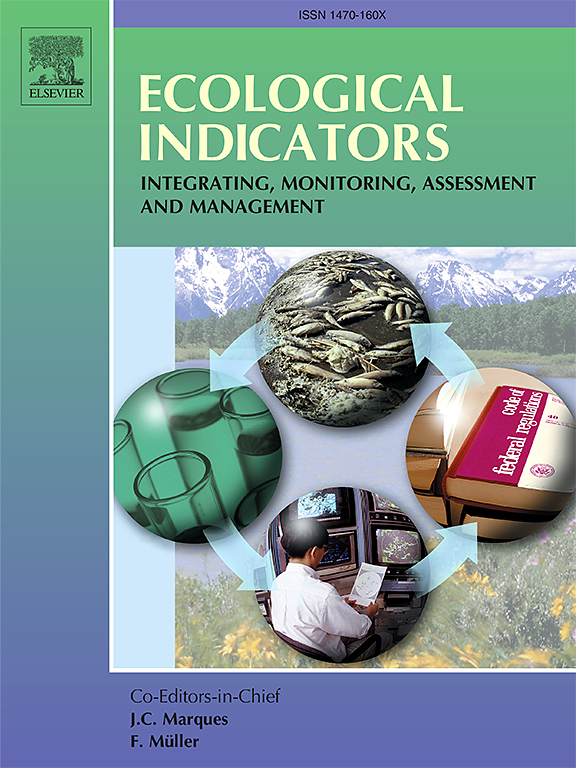Landscape approaches and stakeholder engagement in nature-based solutions for sustainable river floodplains: A systematic review
IF 7
2区 环境科学与生态学
Q1 ENVIRONMENTAL SCIENCES
引用次数: 0
Abstract
Nature-based solutions have emerged as effective strategies for addressing environmental change and promoting sustainable development, with widespread applications in ecologically sensitive areas, such as river floodplains. This systematic review aims to elucidate the application of landscape-scale approaches in nature-based solutions and to emphasise the advantages of stakeholder participation. Following the PRISMA-SCR guidelines, this review analyses 35 selected studies published between 2014 and 2024, focusing on cases where both landscape approaches and stakeholder engagement were integrated into nature-based solutions. The findings reveal that stakeholder participation is lowest during the monitoring and implementation stages, with only 17.14% of the included studies mentioning involvement at this stage. Stakeholder participation is unevenly distributed across different categories, reflecting underlying conflicts of interest. The application of landscape approaches in nature-based solutions presents certain challenges; however, landscape metrics provide valuable data support, and hybrid landscape engineering is widely applied in practice. Remote sensing technologies offer greater potential for data acquisition and stakeholder engagement at the landscape scale. Nevertheless, cases integrating both landscape approaches and stakeholder engagement in river floodplains remain relatively rare, with only three studies identified. Based on the analysis of landscape approaches and stakeholder participation, this review proposes a sustainable governance framework for nature-based solutions in river floodplains, combining both landscape approaches and stakeholder involvement, thereby offering theoretical and practical guidance for future governance efforts in this field.
景观方法和利益相关者参与基于自然的可持续河流洪泛平原解决方案:系统回顾
基于自然的解决办法已成为应对环境变化和促进可持续发展的有效战略,在江河泛滥平原等生态敏感地区得到广泛应用。本系统综述旨在阐明景观尺度方法在基于自然的解决方案中的应用,并强调利益相关者参与的优势。根据PRISMA-SCR指南,本综述分析了2014年至2024年间发表的35项精选研究,重点关注将景观方法和利益相关者参与结合到基于自然的解决方案中的案例。研究结果显示,在监测和实施阶段,利益相关者的参与度最低,只有17.14%的纳入研究提到了这一阶段的参与。利益相关者的参与在不同类别之间分布不均,反映了潜在的利益冲突。景观方法在基于自然的解决方案中的应用带来了一定的挑战;然而,景观度量提供了有价值的数据支持,混合景观工程在实践中得到了广泛的应用。遥感技术在景观尺度上为数据获取和利益攸关方参与提供了更大的潜力。然而,结合景观方法和利益相关者参与的河流洪泛区案例仍然相对罕见,只有三个研究被确定。本文在分析景观方法和利益相关者参与的基础上,结合景观方法和利益相关者参与,提出了河漫滩自然解决方案的可持续治理框架,从而为该领域未来的治理工作提供理论和实践指导。
本文章由计算机程序翻译,如有差异,请以英文原文为准。
求助全文
约1分钟内获得全文
求助全文
来源期刊

Ecological Indicators
环境科学-环境科学
CiteScore
11.80
自引率
8.70%
发文量
1163
审稿时长
78 days
期刊介绍:
The ultimate aim of Ecological Indicators is to integrate the monitoring and assessment of ecological and environmental indicators with management practices. The journal provides a forum for the discussion of the applied scientific development and review of traditional indicator approaches as well as for theoretical, modelling and quantitative applications such as index development. Research into the following areas will be published.
• All aspects of ecological and environmental indicators and indices.
• New indicators, and new approaches and methods for indicator development, testing and use.
• Development and modelling of indices, e.g. application of indicator suites across multiple scales and resources.
• Analysis and research of resource, system- and scale-specific indicators.
• Methods for integration of social and other valuation metrics for the production of scientifically rigorous and politically-relevant assessments using indicator-based monitoring and assessment programs.
• How research indicators can be transformed into direct application for management purposes.
• Broader assessment objectives and methods, e.g. biodiversity, biological integrity, and sustainability, through the use of indicators.
• Resource-specific indicators such as landscape, agroecosystems, forests, wetlands, etc.
 求助内容:
求助内容: 应助结果提醒方式:
应助结果提醒方式:


